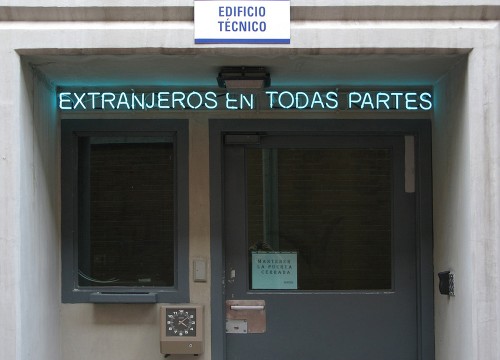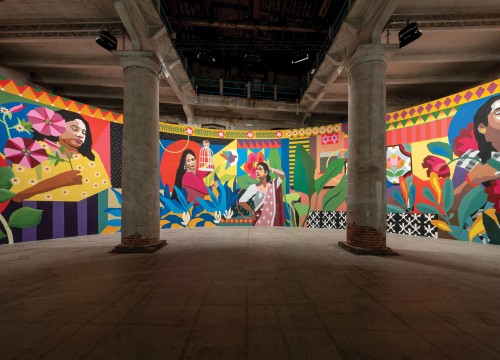Venice: Cecilia Alemani presents her Biennale
The title "The Milk of Dreams" is borrowed from a children's book by Leonora Carrington
Cecilia Alemani: she graduated in Philosophy and she completed a master's degree in Curatorial Studies in New York, where she still lives. She collaborated with the greatest museums of the world and in 2017 she curated the Italian Pavilion at La Biennale. This year she will curate the 59th International Art Exhibition in Venice (23 April-27 November).
213 ARTISTS COMING FROM 58 DIFFERENT NATIONS
WITH THE PREDOMINANCE OF
The title "The Milk of Dreams" is "borrowed from a children's book by Leonora Carrington, an artist close to surrealism, that in the 40s and in the early 50s began to draw fantastic stories about hybrid creatures", images of mutant beings which combine the human and natural world to the mechanic one resulting in a universe where everything is constantly evolving, as it happens in the works which will be displayed in the Biennale 2022, conceived in a moment in history which is suspended between the consciousness of arrogance and the fragility of the human being. Questions like "How the definition of the human being is changing? Which are the differences that separate plant beings, animals, humans and non-humans? What are the responsibilities towards our fellow human beings, towards the other forms of life and the planet we inhabit? What would life be like without us?" animate the exhibition, reflecting the anxiety of our time: "Three are the thematic areas recurring throughout the whole exhibition: the representation of the bodies and their metamorphosis, the relation between individuals and technologies, and the bonds intertwining between bodies and earth". The artists, replacing history with 'minor' narrations, indigenous mythologies and magical domains similar to a 're-enchantment of the world' imagine a post-human condition which counterposes a new communion among human beings, the planet and other forms of life in a relation which is not hierarchic, to the anthropocentric model of the (white) man typical of the Renaissance and the Illuminism, kingpin of the universe and measure of all things.
ON DISPLAY BEINGS COMBINING SPECIES,
SEXUALITY AND DIFFERENT CULTURES, IN WHICH THE HUMAN FIGURE
TENDS TO DISAPPEAR, LEAVING SPACE TO POST ATOMIC FLOWERS
Everything is fluid inside the universe created by the 1433 works displayed at the Biennale 2022, populated by entities born from the union of different worlds. Entities that are open, permeable, free from the restrictions of a determined identity, "combining human and artificial and creating avatars of a post-gender and post-human future". The predominance of women and non-binary individuals among the 213 artists coming from 58 nations, it's a choice that reflects a global scenario which is in great turmoil, characterized by a creative excitement and that is undermining the figure of the human being as the center of the world". There are not just visual artists but also writers and mediums communicating with other dimensions, in a trans-historical journey promoting dialogues between past and contemporary generations, through "time capsules", Biennale's "beating hearts", "small thematic exhibitions gathering works by artists of the 20th century which, in a completely different period, deal with the themes of the exhibition".
NOT ONLY VISUAL ARTISTS BUT ALSO
WRITERS AND MEDIUMS COMMUNICATING WITH OTHER DIMENSIONS
Some names of the past and present key players: Leonora Carrington, Carol Roma, Leonor Fini, Alexandra Exter, Nanda Vigo, Remedios Varo, Gertrud Arndt, Grazia Varisco, Loïs Mailou Jones, Chiara Enzo, Dorothea Tanning, Shuvinai Ashoona, Birgit Jügenssen, Sara Enrico, Barbara Kruger, Gabriel Chaile, Ulla Wiggen, Felipe Baeza, Simone Fattal, Josefa Tolra, Minnie Evans, Tishan Hsu, Diego Marcon, Cecilia Vicuña, Robert Grosvenor, Ficre Ghebreyesus, Zheng Bo, Toshiko Takaezu, Saodat Ismailova, Roberto Gil De Montes, Ambra Castagnetti.
All together they give voice to the creativity of some areas which are considered to be on the outskirts, decentered if compared to the western world, in an inclusive review which reflects time criticalities and the transformations now occurring, among disobedient bodies, subversive icons (a fisherman replacing Botticelli's Venus), human beings intertwining sensual relationships with nature, transfiguration of archetypes (the mechanical Sphinx), beings mixing species, sexualities and different cultures, cryogenic creatures and appearances in which the human figure tends to disappear, leaving space to post-atomic flowers. The agitation of times erodes ancient certainties and reveals unprecedented possible scenarios.

































